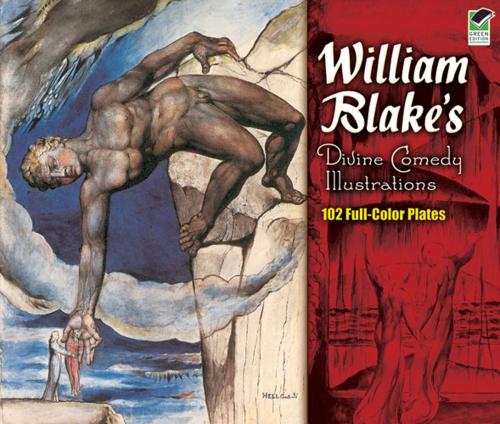William Blake's Divine Comedy Illustrations
102 Full-Color Plates
Nonfiction, Art & Architecture, General Art, Art History, Religious| Author: | William Blake | ISBN: | 9780486133775 |
| Publisher: | Dover Publications | Publication: | December 19, 2012 |
| Imprint: | Dover Publications | Language: | English |
| Author: | William Blake |
| ISBN: | 9780486133775 |
| Publisher: | Dover Publications |
| Publication: | December 19, 2012 |
| Imprint: | Dover Publications |
| Language: | English |
Dante's Divine Comedy captivated medieval readers, and each successive era remains spellbound by its sublime portraits of Hell, Purgatory, and Heaven. In the early 19th century, one of England's great epic poets paid tribute to the Italian master's work. Gifted at both poetry and painting, William Blake transformed more than a hundred of Dante's visions into sketches, engravings, and brilliant watercolors. This collection features all of his distinctive interpretations of Dante's immortal trilogy.
Although Blake labored in poverty and obscurity all his life, he is recognized today as one of the preeminent artists and poets of the English-speaking world. An 1825 commission from patron John Linnell enabled him to focus on illustrating Dante's tales — the type of visionary work to which his talents were ideally suited. The artist spent the last three years of his life creating these images, which range from completely finished pieces to rough sketches. Blake's highly original approach offers not only an excellent introduction to Dante's allegorical tales, but also a new and fresh perspective for those already familiar with the Divine Comedy.
Dante's Divine Comedy captivated medieval readers, and each successive era remains spellbound by its sublime portraits of Hell, Purgatory, and Heaven. In the early 19th century, one of England's great epic poets paid tribute to the Italian master's work. Gifted at both poetry and painting, William Blake transformed more than a hundred of Dante's visions into sketches, engravings, and brilliant watercolors. This collection features all of his distinctive interpretations of Dante's immortal trilogy.
Although Blake labored in poverty and obscurity all his life, he is recognized today as one of the preeminent artists and poets of the English-speaking world. An 1825 commission from patron John Linnell enabled him to focus on illustrating Dante's tales — the type of visionary work to which his talents were ideally suited. The artist spent the last three years of his life creating these images, which range from completely finished pieces to rough sketches. Blake's highly original approach offers not only an excellent introduction to Dante's allegorical tales, but also a new and fresh perspective for those already familiar with the Divine Comedy.















